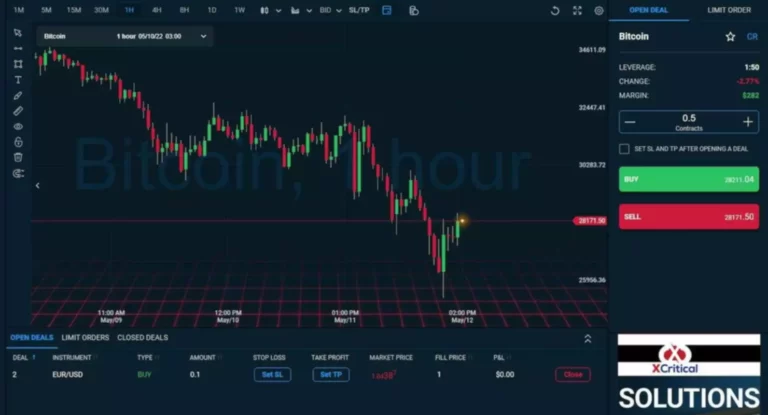Find out the objectives of each cryptocurrency, and the specifics of each digital asset that can inform you as an investor. It’s distributed in the sense that everyone participating in the Ethereum network holds an identical copy of this ledger, letting them see all past transactions. It’s decentralized in that the network isn’t operated or managed by any centralized entity—instead, it’s managed by all of the distributed ledger holders. Ethereum (ETH) is the second most popular cryptocurrency after Bitcoin. Founded by Vitalik Buterin and Gavin Wood in 2015, today Ethereum’s market capitalization represents approximately 20% of the $1.1 trillion global crypto market. The UK regulator, the Financial Conduct Authority, has repeatedly warned investors that they risk losing all their money if they buy cryptocurrency, with no possibility of compensation.
Indirect expenditure could also include the energy required to consume content on end-user devices such as TVs, computers and mobiles. Bitcoin is the progenitor of the cryptocurrency market, laying the foundation for decentralized networks. In the past decade, thousands of cryptocurrencies have appeared and disappeared, but Bitcoin, despite being the oldest, remains stronger than ever. This is a testament to the network’s strength and utility as a store of value.
Exchanges shouldn’t just be compared based on the price they offer, but on their security features and broader reputation. If you’re trading large volumes of crypto, then investing in an offline wallet will safeguard your coins. Ethereum is changing, with a phased introduction of what’s called Eth2.
Bitcoin Cash did launch, as a fork in the Bitcoin software in August 2017. But the majority of the miners and developers stuck with the traditional chain, and Bitcoin Cash became just another Bitcoin spinoff. Even today, Bitcoin promoters refer to Bitcoin Cash as a “rebellion” and a “corporate takeover,” as opposed to a sincere effort to improve Bitcoin’s usability. The last time anyone tried to make a major change to Bitcoin was with Bitcoin Cash, an effort to increase the block size so Bitcoin could scale and become more useful as an actual currency. Vitalik Buterin, Ethereum’s creator, always intended for Ethereum to use proof of stake. To complicate things further, transactions rejected on the temporary fork may not have been included in the accepted chain.

From the very beginning, Ethereum planned to implement a proof-of-stake based consensus mechanism, but doing so without sacrificing security and decentralization took years of focused research and development. Therefore, a proof-of-work mechanism was used to get the network started. Proof-of-work requires miners to use their computing hardware to calculate a value, expending energy in the process. On Ethereum, for example, the transaction throughput is not only that of the base layer – it is also the sum of the transaction throughput of all of its “layer 2” rollups. This is one reason why comparisons of per-transaction energy consumption across platforms can be misleading.
- Sybil attacks are when one user or group pretends to be many users.
- Bitcoin and Ethereum are fundamentally different because the former was designed to enable decentralised finance while the latter was designed to also enable apps and contracts.
- There are multiple applications that you can use to estimate the fees.
- The consensus mechanisms of Bitcoin and Ethereum are expected to increasingly diverge.
They made the decision to merge the live blockchain with the Beacon Chain to run as a dual-layer network, hence the name The Merge for when the live Ethereum network makes the switch. In this article, we look at the main features of the two blockchains and their native coins, as well as some analysts’ views. Ether has outpaced the gains ethereum vs bitcoin on bitcoin in recent weeks, as the transition of the Ethereum blockchain from proof-of-work (PoW) to proof-of-stake (PoS) with The Merge has been scheduled for 15 September. ETH had gained 40% over the past month, as of the time of writing (17 August), compared with a 14% gain in the BTC price, according to data from CoinMarketCap.
They broadcast the block to other validators, who run the transactions and check that the block is valid. Validators receive ETH rewards when they propose or validate blocks, incentivizing them to make the initial stake. The proof of stake method relies on validators who stake—agree to not trade or sell—their cryptocurrency. https://www.xcritical.in/ Proof-of-stake validators can operate and maintain the blockchain without the need for extensive energy or computing resources. You might consider investing in the Ethereum network for a few reasons, according to DeWaal. Second, the Ethereum blockchain could become more attractive when it migrates to the new protocol.

By understanding their dynamics, strengths, and challenges, users and developers can make informed decisions and contribute to a more efficient, inclusive, and innovative DeFi landscape. As US policymakers navigate the complex world of DeFi, understanding these layers and their implications is crucial for informed decision-making and future regulatory considerations. Are you trying to decide whether investing in bitcoin or ethereum is right for you? The answer depends on your personal investing goals and risk tolerance.
In the six months between March and Sept. 2022, the cost of a basiceEthereum transaction ranged from about $1.6 to more than $196. Bitcoin’s average transaction fee ranged approximately between 74 cents and $3.5 in the same time period. With the move to proof of stake, the ethereum network hopes to bring down its energy consumption by 99.95%. As it exists currently, Bitcoin is not stable enough as a store of value to act as a currency. Like just about every other cryptocurrency (with the exceptions being those designed to tie to the price of fiat currencies like sterling and the US dollar). Bitcoin’s is called proof of work while Ethereum is moving towards a proof of stake consensus mechanism.
Twitter is an example of a centralized app, with users relying on it as an intermediary to send and receive messages. Distributed apps help users send and receive data directly without an intermediary. It claims that as an app, it doesn’t optimize for advertising revenues, an issue it says users of centralized apps suffer from. As such, users play by the rules, it enforces and the algorithm it uses to control content. However, there are other important differences that are less obvious (UTXO, hashing algorithm, etc).
Bitcoin (BTC) and Ethereum (ETH) are showing signs of breaking out after coming under immense selling pressure early in the year. The two cryptocurrencies plunged from record highs, fuelling concerns of a possible bubble burst in the sector. Ethereum operates on the proof-of-stake consensus mechanism, while BTC operates on the proof-of-work mechanism. BTC is primarily used as a store of value, while ETH is mainly used to transact with applications built on the Ethereum blockchain. The decision on whether to buy BTC or ETH depends on your personal preference and investing goals, among other factors. You should do your own research to help you decide which to invest in.
This prevents bad actors from jamming up the system with frivolous requests. When a transaction needs to be validated, an arbitrarily difficult mathematical problem must be completed by the verifying machine. This is what allows the network to function without the need for a central authority or third-party to ensure that everything is working. This article is not an endorsement of any particular cryptocurrency, broker or exchange nor does it constitute a recommendation of cryptocurrency as an investment class. Regardless, and as is the case with all cryptocurrencies, BTC and ETH are both volatile. Prices are unpredictable and prone to crashes, as we saw in May of this year when the market capitalisation of crypto assets fell to around $US900 billion — down from $US3 trillion.
Whether one is a better investment for you will depend on your personal view of the two projects. Transactions on the Ethereum blockchain modify that state—we’ll explain how when we discuss smart contracts. Each new block contains numerous state changes, which are synchronized across the nodes of the Ethereum network. Then, there is a protocol that governs how honest validators are selected to propose or validate blocks, process transactions and vote for their view of the head of the chain. Ethereum’s proof-of-stake consensus mechanism uses ETH instead of energy to secure the network.

